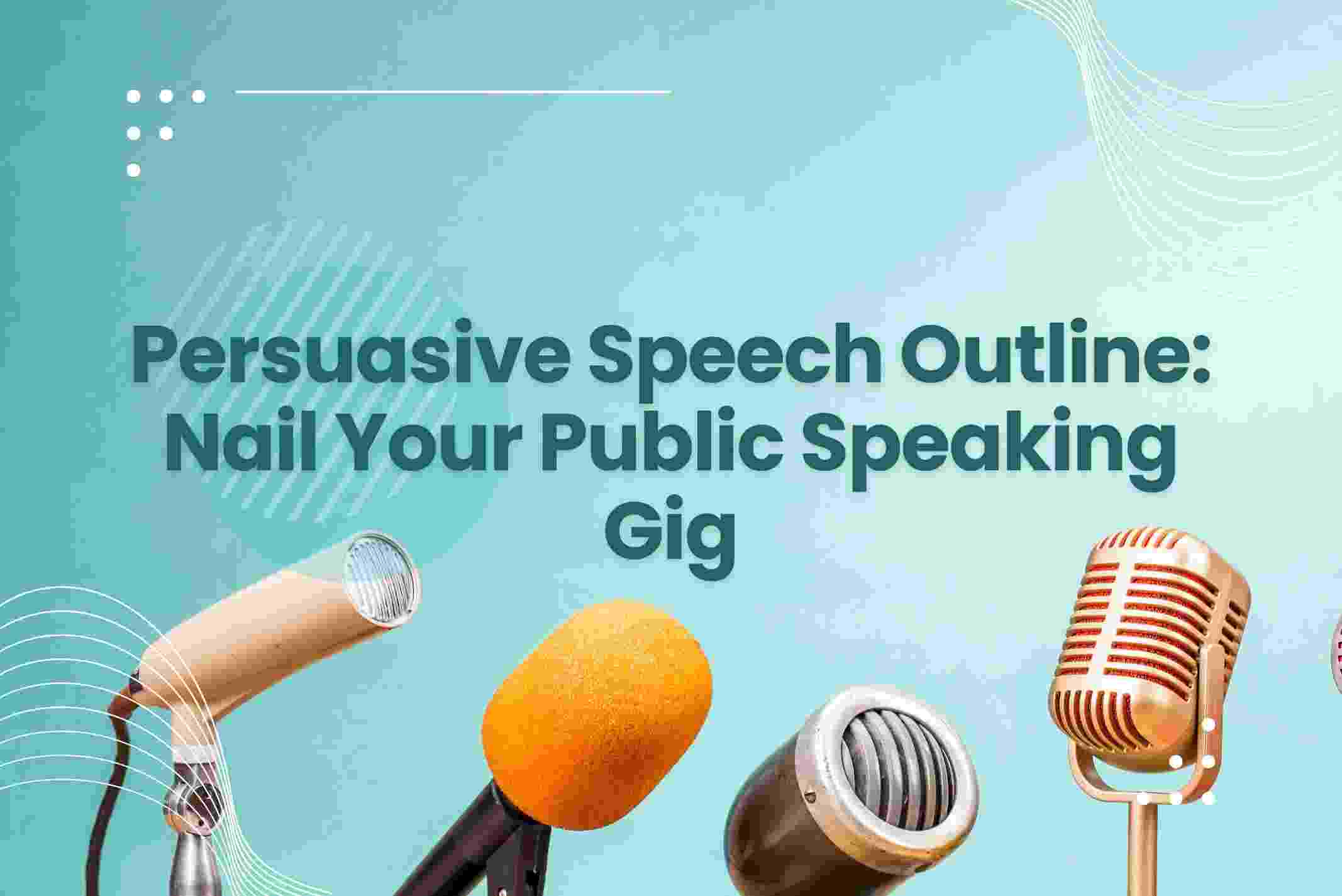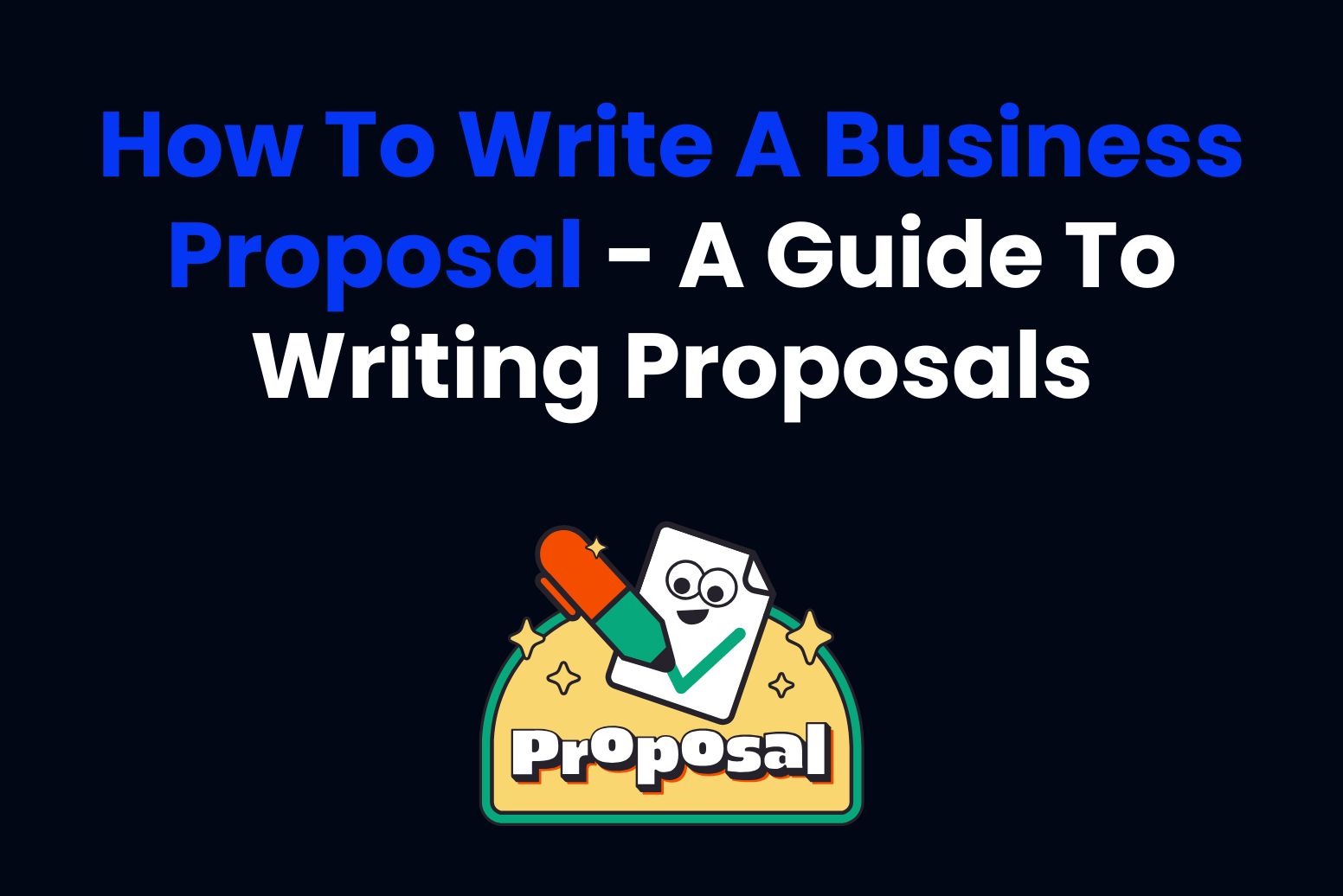Working on a persuasive speech outline can help you nail your public speaking gig.
After all, you’ve heard the old saying: if you fail to prepare, prepare to fail.
Standing up to speak in front of people is scary enough. But when you need to persuade them to do something, it’s potentially even more terrifying.
In fact, more than three-quarters of people suffer from speech anxiety, while one in four have a genuine fear of public speaking.
This doesn’t bode well if you’re currently preparing for a persuasive speech, whether it’s at work, at college, or at a conference.
To help ease your anxiety and to provide you with the perfect foundation to work from, we’re here to explain how to create the perfect persuasive speech outline.
We explain what you should include, how you can persuade people, and how to practice your delivery to nail your public speaking gig.
How to put together the perfect persuasive speech outline
Persuading someone to do something isn’t easy. Whether you’re trying to change someone’s behavior, looking to sell something, or keen to make a change, you need to be persuasive.
But what’s the secret to a persuasive speech? Here are some things to think about when creating a persuasive speech outline ahead of your gig:
How to be persuasive: The Rhetorical Triangle
Academic research presents the Rhetorical Triangle. In other words, as taught by Aristotle, there are three techniques to persuade someone to do something:
- Logos: This appeals to the person’s reasoning. In your persuasive speech outline, this should concern the argument that you’re making.
- Ethos: This appeals to the person’s character. In a speech, it is your credibility as the speaker (or writer) that matters.
- Pathos: This appeals to the person’s emotions and values. Specifically, it is the emotions of the people listening to your speech.
We don’t expect you to master the Rhetorical Triangle when putting together a persuasive speech outline. But answering these three questions will help to cover each angle:
⭐Is my argument clear, specific, and supported by credible evidence (Logos)?
⭐What are my qualifications, and am I presenting in a tone that is suitable to my audience (Ethos)?
⭐Am I using good examples to appeal to the values and the emotions of the audience (Pathos)?
Starting with the Rhetorical Triangle is a handy way to formulate your speech. You can then work on the details, as we explain below.
Purpose and audience: Creating a persuasive speech outline
When you understand the basics of being persuasive, you can start thinking about the content of your speech. The best way to do this is to begin with a purpose.
Why are you speaking? What do you hope to achieve? Why do you want to persuade people to buy, sell, or change something? For instance, your goal could be to persuade people to:
- Buy an innovative product.
- Believe in something (a religion, for example).
- Vote for a specific party.
- Stop doing something (give up drinking, smoking, or drugs).
- Try something new (a weight-loss program, for instance).
You must be clear from the outside about the purpose of your speech. You should be able to write this down in a single sentence, as this will form your persuasive speech outline.
Then, you need to define your audience. Who are you speaking to? What messages will they be receptive to? Think about the age, gender, attitudes, beliefs, and values of your audience. The more specific you are, the easier it will be to relate to them.
Structuring your persuasive speech outline
You’re now ready to get some ideas down in front of you. At this stage, your speech doesn’t need to be well-formed, but it needs to have a basic structure and foundation.
The easiest way to think about this is with a clear beginning, middle, and end:
- The beginning of your speech must hook your audience. Appeal to their emotions and values and use a statistic that helps your audience.
- The middle section of your speech is where you lay out your argument. Introduce credible sources and back up any claims that you make.
- The end of your speech is all about impact. Drive home your key points and make a call to action. If you have persuaded people, make sure they know what steps they can take next.
Putting together a persuasive speech outline is a little like structuring an essay or a book, but it’s not always easy to know where to begin.
If you need some help, our AI-Generated Speech Writer can help you bring some ideas together. It’s perfect for getting ideas down, generating a structure, and working on a template for your speech. You can then personalize and edit it as you go.
Complete a first draft
Writing a persuasive speech is an iterative process, and you can’t expect to nail it right away. In fact, you will probably end up with three or four drafts before you’re happy with your speech.
However, before practising your persuasive speech, you need to finish your first draft. So, after considering the Rhetorical Triangle, defining your purpose and audience, and structuring the ideal persuasive speech outline, you’re ready to write a draft.
Don’t worry yet about perfecting your speech. You just want to get something down on the screen (or on paper) in front of you so you can work on it in the coming weeks.
We recommend using Google Docs for this process, as you can track changes as you make them, which can be super helpful when practicing.
After completing your first draft, our AI Writing Improver can help to polish and enhance your speech. It helps with things like synonyms, tone of voice, and language, offering real-time feedback you can work on.
Tips for mastering a persuasive speech outline
So, how do you master and perfect your persuasive speech outline? Consider the following tips that will help you nail your public speaking gig:
Practice makes perfect
We can’t overstate the importance of practising your speech well in advance of the event. Don’t leave yourself with just a few days to rehearse, as you could end up crumbling under the pressure.
We advise you to start practising several weeks (or even months) ahead of the speech. Begin by practising in front of your mirror and make notes as you go.
It’s also a good idea to record yourself speaking, as you can pick up on things you would like to improve or remove from your delivery. If you have a supportive spouse or close friend, you can ask them to sit and listen to your speech as you work on it.
Harvard Research lists practice as the most crucial aspect of speech preparation. So, the more you practice, the better your persuasive speech will be!
Ask questions – get the audience thinking
One of the best ways to resonate with the audience from an emotional standpoint is to ask questions. Invite the audience to think about what you’re saying to them and how it relates to them.
Our advice is to list several questions in the main body of your speech that you would like your audience to think about. These can be big, existential questions or more specific rhetorical questions that urge them to look inwardly.
Remember, the key here is not to get the audience to shout out responses. Rather, you want them to come around to your way of thinking, and asking the correct questions is a successful way to achieve this.
Use statistics to your advantage
As Aristotle said all those years ago, you must appeal to a person’s reasoning if you’re going to persuade them to do something.
In the age of misinformation, one of the best ways to do this is to point to credible sources. The more credible a source, the more believable it is to the audience.
The best way to present an argument is to offer data you have collected yourself. But failing that, draw on academic studies and research published by credible agencies and platforms.
If you want to hit a home run with your persuasive speech, your statistics and research need to stand up to scrutiny, so don’t take a chance with poor sources.
Add a resounding CTA
Another crucial aspect of any persuasive speech outline is the call to action (CTA). After all, if you don’t encourage people to take the next steps, how do you know if you have successfully persuaded them?
The CTA could be any of the following:
- Follow me on X to access a limited-time offer on my course.
- Sign the petition to show that you want to end illegal logging in the Amazon.
- Attend our first-ever service at our new church on the first of December.
Ideally, you will be able to monitor the call to action to see whether it has been successful in the weeks after your gig.
Leave time for questions
If the event allows, we recommend fielding some questions from the audience. While some people want to avoid questions, we feel that it’s a brilliant way to build a relationship with the people who have come to hear you speak.
Also, you can use audience questions to potentially increase your speaking time, particularly if you’re limited to how long you can speak for. This is a good way to open future dialogue and reinforce points you have already made on stage.
Recap – Mastering a persuasive speech outline
Mastering a persuasive speech outline takes time, but you will get there with the right steps. Using the Rhetorical Triangle as your starting point, you can hit the key pressure points when engaging with the audience, which will help you to persuade them.
With your speech outline confirmed, you then need to practice your delivery over time. The more you practice your speech, the more likely it will be successful. Don’t be afraid to try different approaches, and consider using AI to help you, particularly if you’re stuck for inspiration.
Persuasive speech outline FAQ
You should use a persuasive speech outline as a guide rather than as a guarantee of success. As mentioned, speech writing is an iterative process, and you may need to change your speech a few times before being happy with the final draft. Don’t be afraid to change things, and be willing to try new tools and sources of inspiration that will help you write the perfect speech.
A persuasive speech needs a clear beginning, middle, and end. But more than that, you must hook the audience from the start and deliver a speech that’s emotionally charged and relatable. You can follow the method and the structure outlined above to work on a persuasive speech outline that will help you nail your public speaking gig.
Yes, you can use AI to work on a persuasive speech outline. At Arvin AI, we have numerous tools that can help to structure your speech, make it more persuasive, and polish your final delivery. Check out our AI tools today for a full scope of the AI services that we offer.






